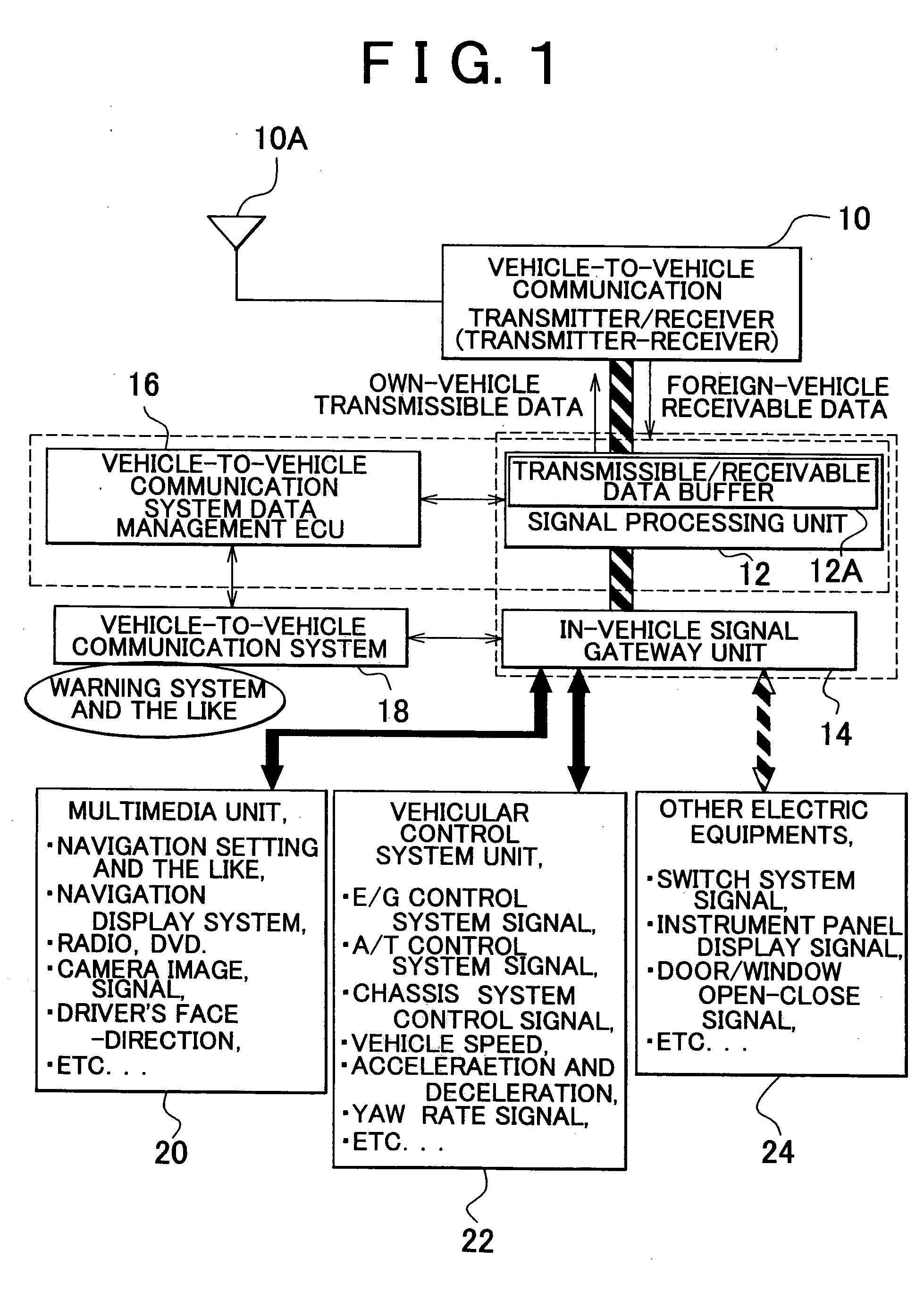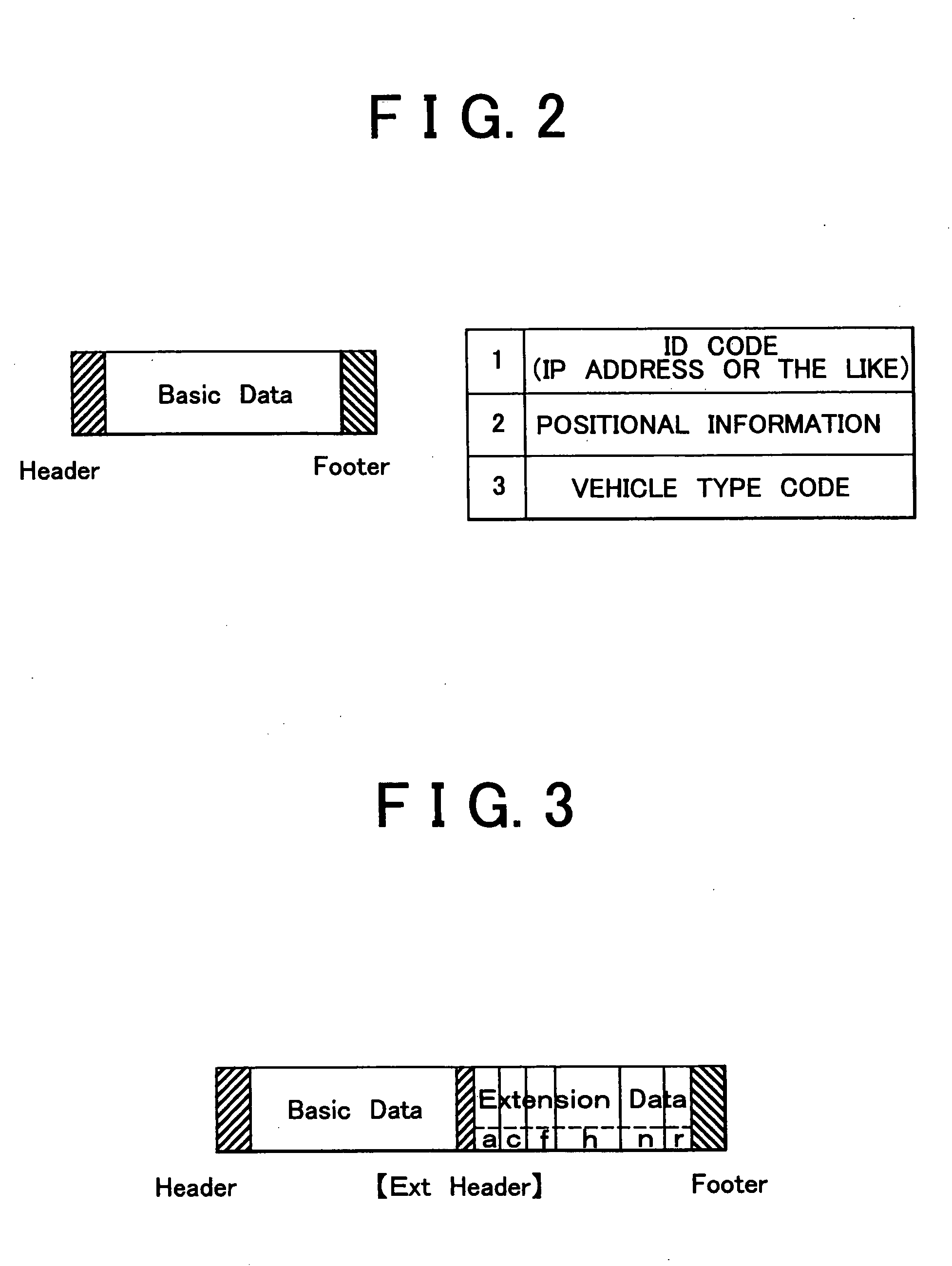Communication apparatus
a technology of communication apparatus and communication device, which is applied in the field of vehicle communication, can solve the problems of increasing the burden of processing the signal on the reception side, the inability of each vehicle to efficiently acquire the required information on any one of the other vehicles, and the increase of the burden of processing the signal
- Summary
- Abstract
- Description
- Claims
- Application Information
AI Technical Summary
Benefits of technology
Problems solved by technology
Method used
Image
Examples
Embodiment Construction
[0038] FIG. 1 is a block diagram of a vehicle-to-vehicle communication system in accordance with the first embodiment of the invention. A vehicle-to-vehicle communication transmitter / receiver 10 (hereinafter referred to simply as a "transmitter-receiver 10") is included in the vehicle-to-vehicle communication system of the first embodiment. The transmitter-receiver 10 is provided with an antenna 10A for vehicle-to-vehicle communication and establishes vehicle-to-vehicle communication with a foreign vehicle by transmitting or receiving radio waves of a radio-frequency bandwidth (e.g., millimeter waves of a bandwidth of 60 GHz). Spread spectrum communication may be adopted as a communication mode. In the description in "DETAILED DESCRIPTION OF PREFERRED EMBODIMENT" of the present specification, it is assumed, unless otherwise mentioned, that vehicles qualified for communication include a plurality of persons (e.g., pedestrians), bicycles, wheelchairs and the like as well as a pluralit...
PUM
 Login to View More
Login to View More Abstract
Description
Claims
Application Information
 Login to View More
Login to View More - R&D
- Intellectual Property
- Life Sciences
- Materials
- Tech Scout
- Unparalleled Data Quality
- Higher Quality Content
- 60% Fewer Hallucinations
Browse by: Latest US Patents, China's latest patents, Technical Efficacy Thesaurus, Application Domain, Technology Topic, Popular Technical Reports.
© 2025 PatSnap. All rights reserved.Legal|Privacy policy|Modern Slavery Act Transparency Statement|Sitemap|About US| Contact US: help@patsnap.com



